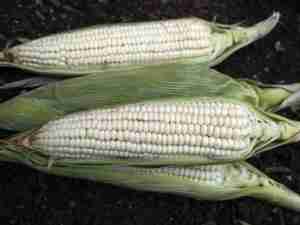China will likely continue buying U.S. distillers' dried grains with solubles (DDGs) and corn after a poor harvest helped to push up prices.
"Now is the time to import corn and DDGs into China because corn there is so expensive," DJ Kang, grains buyer at China-based Century-Light Industry, said on the sidelines of the 14th annual Distillers Grains Symposium.
"There will be strong demand for the product," Kang continued. "The protein market is increasing so fast, (growing) maybe 10 percent each year."
The rapidity growing Chinese economy has allowed more residents to afford to eat pork, beef and chicken, and the country has boosted imports of protein-rich soybeans and, now, DDGs to record levels.
Kang said he began importing distillers' grains by container in August of last year and has struggled to keep up with local demand from feed millers. He said there are 800 mills in his home Qingdao province and 1,100 in two neighboring provinces.
China imported 213,000 tons of distillers' grains in the first two months of the year, overtaking Canada as the No. 2 export destination and trailing only Mexico, which imported 276,000 tons in the first two months of the year, according to the U.S. Grains Council.
China also bought U.S. corn for the first time since 2006.
If China increases its distillers' grains purchases only slightly, it could become the No. 1 export destination, said manager of international operations for DDGs at the U.S. Grains Council.
Use of Distillers' Grains on Rise in US, Elsewhere
Jung Chang, an Oregon-based grains trader, said distillers' grains are increasingly popular to her customers in China, Indonesia, South Korea and Vietnam.
However, prices out of the Pacific Northwest have risen recently, making the feed less attractive.
"Recently, the price is going up because of (demand from) China, so (some feeders) can't use it," Chang said at the conference.
Use of DDGs is expected to rise in the U.S. during the next five years while use of corn as feed will decline, an agriculture economist said earlier at the event.
New Derivatives Products May Help Hedge Costs
The CME Group may soon launch a floor-traded corn crush product and distillers' grains option contract to go along with its DDGs futures contract launched last month, said Richard Jelinek, associate director of products and services for CME Group.
DDGs futures got off to a slow start, with only 10 trades on the first day of trading on April 26 and little interest since, with commercial buyers and speculators alike reluctant to trade the untested contract.
The exchange is looking for so-called "market makers" who will continuously make bids and offers on the DDGs contract, he said.
"We came out of the gates blind," Jelinek said. "It's gotten to the point where we don't even have bids and offers on the table."
Three or four market makers from the soybean crush pit have approached the exchange about offering a similar crush for corn, Jelinek said.
He said the exchange may also introduce contracts for trading distillers' grains options as well as a device to clear over-the-counter cash trades of DDGs. (Reuters)






